Review - Laserglow Galileo Green Laser Pointer
Posted: 26 September 2024
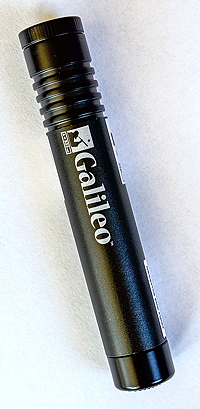
Galileo Green Laser Pointer
Laserglow Technologies
$89
For years I had resisted the temptation to get a "green laser pointer" to point out objects in the night sky. I used to take a telescope to events where I was the only speaker outside at night, but as I've gotten older I don't do that anymore. So, it was time to switch to just talking about what we can see in the night sky. And to effectively do that I decided to get a good laser pointer.
I asked a noted Professional Dark Sky Advocate, who I had seen use a green laser pointer, what he used at star parties. He told me he had been using the same Laserglow Technologies "Galileo" Pointer for 10 years and liked it. I checked the specifications. After discovering and reporting a bug on their online ordering web page (I still have the knack for discovering software bugs that I mention in my autobiography Finding my Way to the Stars), I was finally able to place my order. It arrived in good condition from Canada two days later.
The Galileo green laser pointer is 532nm frequency (green, which is the best color for pointing out objects in the night sky) and up to 5 milliWatts (4.99mW actually). Laserglow says the single Lithium 3V "CR123" battery (included) will power the pointer for up to two hours in continuous use. It has an IR filter for safety (but you still must never point the laser light at an eye, a reflective surface, or at an aircraft). It is Class IIIa compliant and is legal for use in the United States.
The Galileo pointer comes with a nice snap-shut padded case that holds the manual, a CR123 battery, and the pointer. The metal pointer seems solidly built and nothing rattled when shaken.
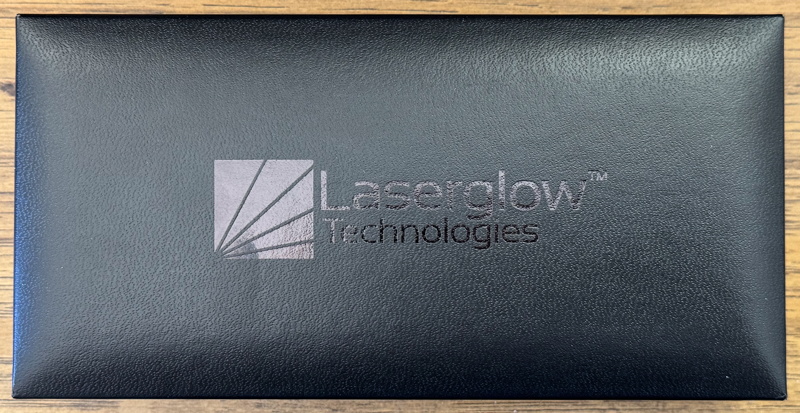
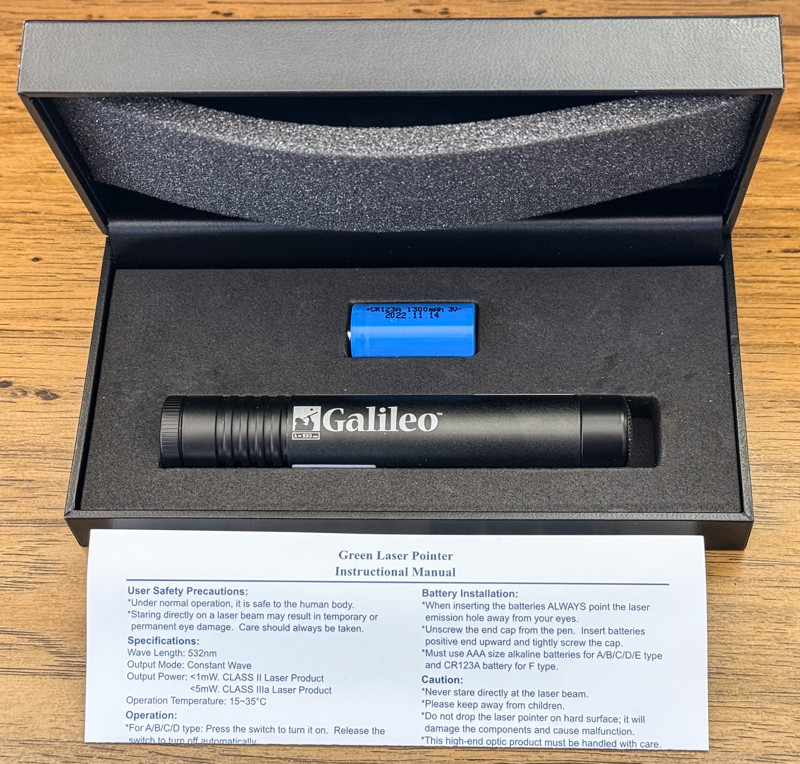
I was surprised at the instructions for inserting the battery with the "positive end upward". To me, "upward" means towards the sky. Fortunately, the manual shows the positive end at the screw-off cap end of the pointer, which is opposite where the laser shines out. There is a label on the outside of the pointer that shows the battery orientation and says "insert batteries with negative end first". (NOTE: there is only battery for the Galileo model.)
As a test of using the Galileo pointer in a light polluted area, I first tested it on a night with the one day past Full Moon in the sky. I could see the beam, as could a person standing three feet from me. However, a person standing six feet from me could not see the beam. I repeated the test on the next night with a bright moonlit sky and took these photos.
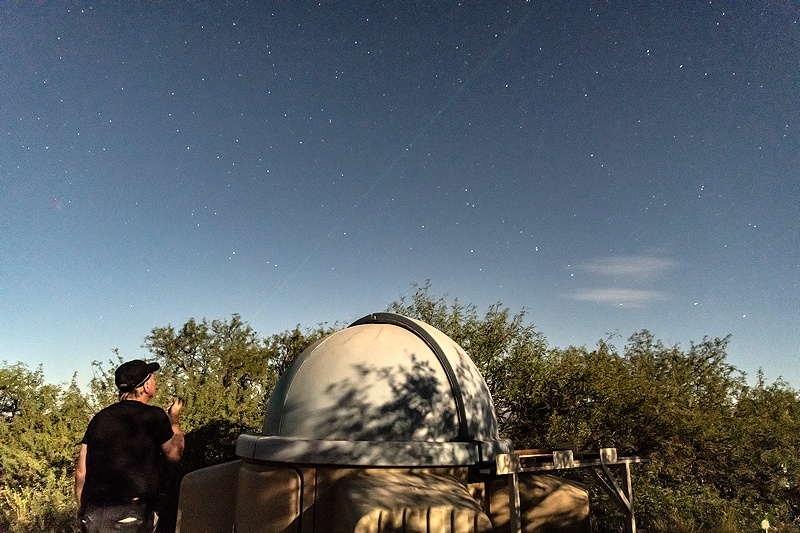
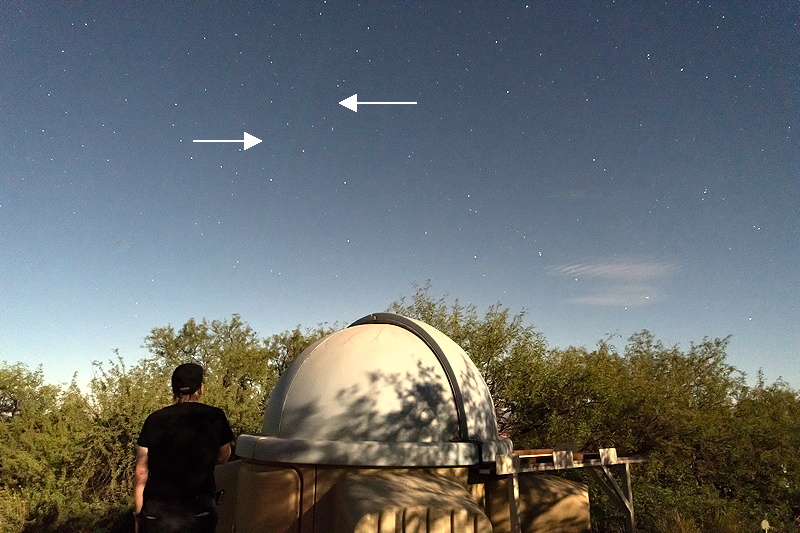
On another night I tested it at my dark sky location after the end of Astronomical Twilight with no Moon in the sky. Visually, the beam was seen by a person up to six feet away from me, but was not visible beyond six feet.
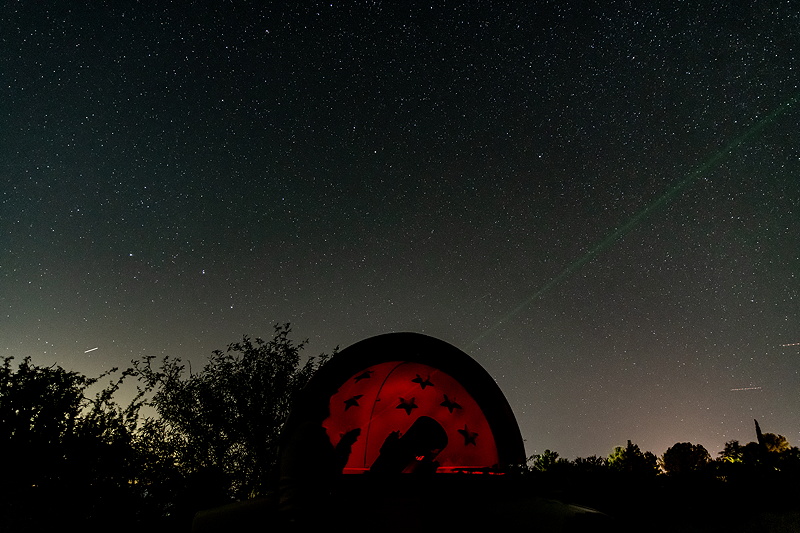
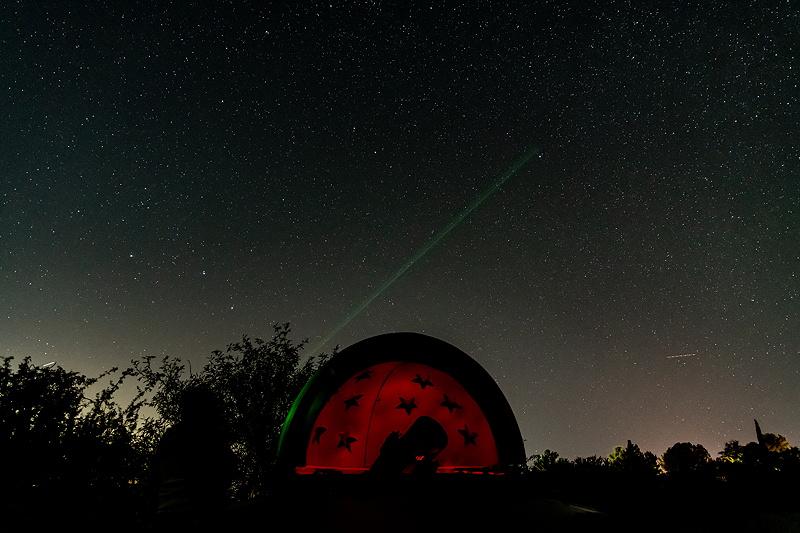
My last test was at an even darker site, Oracle State Park, a DarkSky International "International Dark Sky Park". The Galileo pointer was effective for pointing out objects in the night sky, even before the end of Astronomical Twilight.
There is no tripod mounting hole on the Galileo pointer, but as I discovered later, Laserglow has an optional tripod adapter ($15). Had the adapter appeared on the Laserglow Galileo product web page I would have likely ordered it as well at the same time I ordered the laser pointer.
Unlike low-end green laser pointers, the high-end Galileo uses a click-ON-click-OFF button vs a momentary press-ON button. That works well when mounted on a tripod (with the optional adapter), you are not moving from night sky object to night sky object, and/or you want it OFF to let skygazers find the object without the green laser beam pointing the way. When aiming at an astronomical object for a few seconds, you have to hold the pointer in one hand and turn it off with the other hand. There can be times when that is inconvenient. It can also be dangerous, as seen in this photo taken on the moonlit night when I was moving the laser pointer to point at another object in the sky.
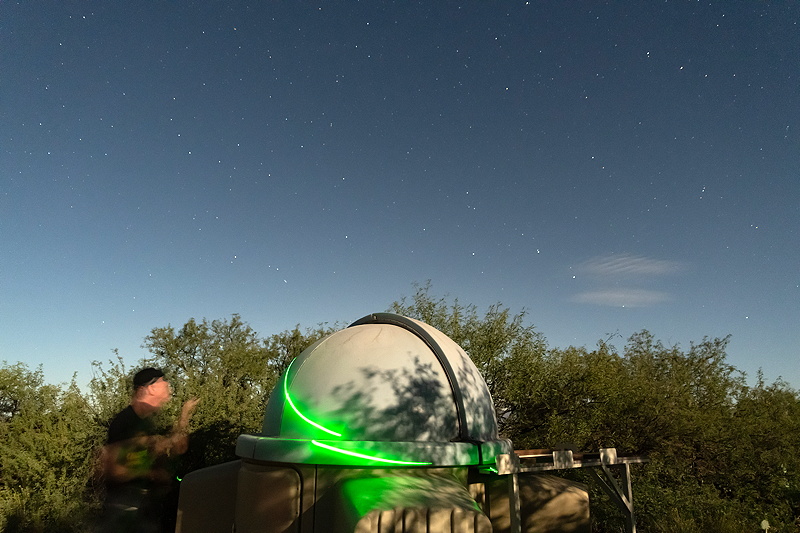
Other than the need to remember to turn it off when not actually pointing at a sky object and needing to use two hands to operate it, the Galileo is easy to use. Changing the battery is a simple task and can be done in a dark location. I still haven't reached the estimated 2-hour battery life after several nights of use.
Summary
As I demonstrated, a 5mW green laser pointer will not be very effective when used in a light polluted location or on a night with a bright moonlit sky. However, on dark nights at a dark location, the Laserglow Galileo Green Laser Pointer is a useful tool for night sky public outreach.
I do wish that this high-end laser pointer had a small "lug" on the side (like on camera bodies) to which a lanyard or strap could be attached. That would make it more secure to hold in your hand. Other than not having a strap lug and not having a momentary ON button, the Galileo is an excellent green laser pointer that should last for years (the warranty is six months).
Laserglow Technologies has five different laser pointer models, three of which are 532nm frequency, so you can probably find a model that best suits your need.
I will update this review as appropriate, in particular once I get to use it at low temperatures on Winter nights.
Comments are welcome using Email.
Cassiopeia Observatory Home Page
Copyright ©2024 Michael L. Weasner / mweasner@mac.com
URL = http://www.weasner.com/co/Reviews/2024/Laserglow_Galileo/index.html

